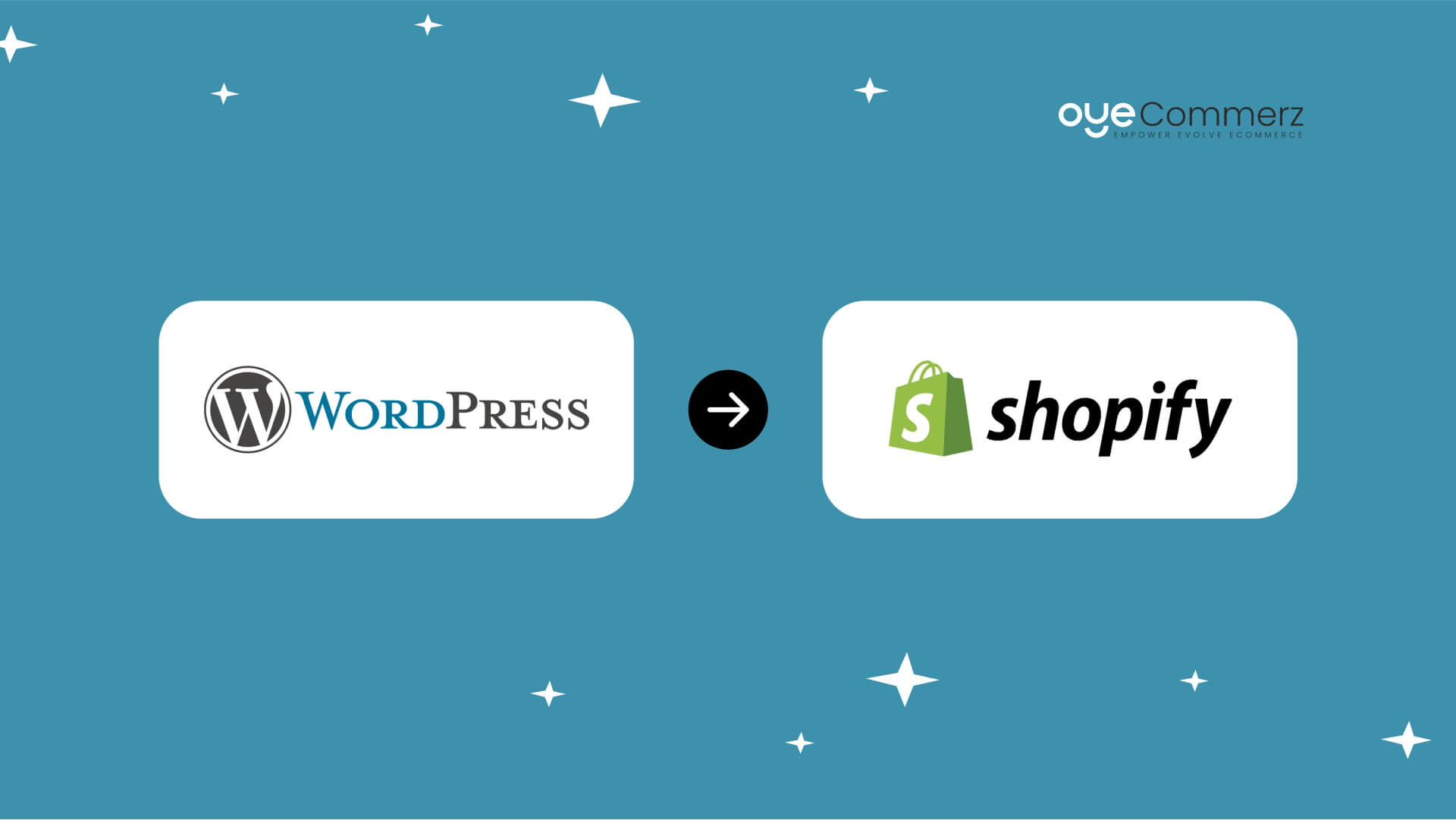Transitioning from WordPress to Shopify marks an exciting step toward streamlining your e-commerce operations. As businesses expand, choosing a solution that aligns with scalability, UX, and customization becomes crucial. Shopify is widely recognized as a favorite for e-commerce professionals, offering superior flexibility, data protection, and ease of use. In this guide, we’ll explore the transformative impact of this migration, discuss the advantages, and provide actionable steps to ensure a smooth move.
1. Why Switch from WP to Shopify?
WordPress, paired with WooCommerce, has served countless online stores. However, as companies scale, issues like plugin dependency, security vulnerabilities, and technical complexities often obstruct progress. Shopify, designed explicitly for e-commerce, eliminates these issues with an comprehensive, intuitive solution. Statistics supports this transition—Shopify powers over 4.4 million stores worldwide, with a reported 10% boost to sales performance for many businesses post-switch.
2. Key Benefits of Shopify for E-commerce Success
Shopify’s robust ecosystem caters for scaling brands. Its notable benefits are:
- Seamless Customization: Shopify provides over 80 expertly crafted themes.
- Built-in Features: Capabilities such as Shopify Payments and integrated SEO save time and effort.
- International Expansion: Currency versatility and regional customization enable brands to expand internationally.
Additionally, Shopify boasts an availability percentage of 99.98%, ensuring your store remains accessible.
3. Preparing for WordPress to Shopify Migration
Before migrating, evaluate your existing setup. Analyze product data, client information, and search engine rankings. Tools like Shopify’s Migration Kit or third-party solutions help ease the transition. Create a comprehensive plan, making sure all resources—item details, images, and blog content—are optimized for transfer.
4. Data Migration: A Critical Step
Data migration forms the foundation for a successful transition. When moving from WordPress to Shopify, focus on:
- Inventory Details: SKU, descriptions, and categories.
- Customer Data: Emails, purchase records, and custom fields.
- Search Engine Considerations: Retain meta tags, URLs, and redirects to avoid SEO losses.
Use apps like LitExtension to facilitate seamless migration while minimizing errors.
5. Customizing Your Shopify Store
After the move, customizing your Shopify store helps it aligns with your brand. Take advantage of Shopify’s drag-and-drop editor to create layouts Data migration to Shopify with ease. Shopify's templates are mobile-responsive, providing a seamless user experience across platforms—a key point, given 74% of online shopping is generated by mobile users.
6. How to Protect Your SEO Rankings When Switching Platforms
SEO is vital for maintaining your visibility during migration. Shopify excels in SEO with organized link formatting, preloaded features, and seamless blog integration. Ensure:
- Set up URL forwarding for existing links.
- Enhance updated content with targeted phrases.
- Leverage plugins like Plug in SEO to monitor performance post-migration.
7. Essential Tests After Migrating to Shopify
After finishing the transfer, run detailed checks.
Review: - Website speed (Shopify delivers faster speeds in contrast with WordPress).
- Payment integration reliability and transaction flow.
- Adaptability across devices.
Testing ensures your store provides a smooth shopping journey from the start.
8. Case Study of a Successful Migration
An example of effective platform switching is Gymshark, a sportswear company that transitioned to Shopify. After the switch, the company saw a 60% increase in mobile sales and reduced site downtime. This showcases the potential of Shopify in driving online business success.
9. Overcoming Common Migration Issues
Migration is not without obstacles, such as Migration for WordPress websites data integrity and adjusting tailored features. However, Shopify’s robust support and third-party experts simplify the process. Collaborating with experienced Shopify developers ensures a trouble-free transition.
10. Making the Switch: The First Step Toward Success
Switching from WordPress to Shopify represents a strategic decision to e-commerce. By focusing on growth, simplifying management, and improving buyer satisfaction, Shopify enables companies to succeed in competitive markets.
Final Thoughts
Switching from WordPress to Shopify offers a smart solution that can greatly enhance your online business performance. With a well-structured strategy, the appropriate resources, and professional guidance, you can achieve new success milestones.
Excited to start the journey? Let’s discuss how our Shopify migration services can transform your online store. Get in touch today, or consider: Is it time to seize Shopify’s advantages for your store?
